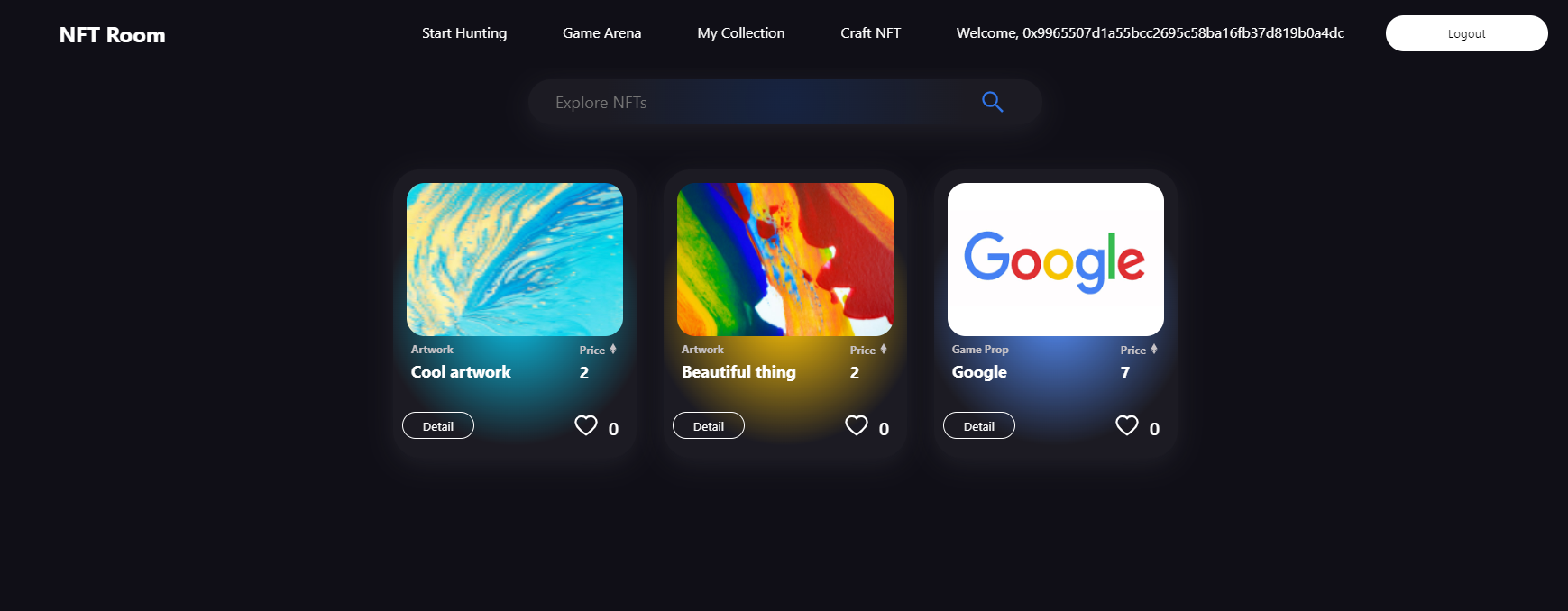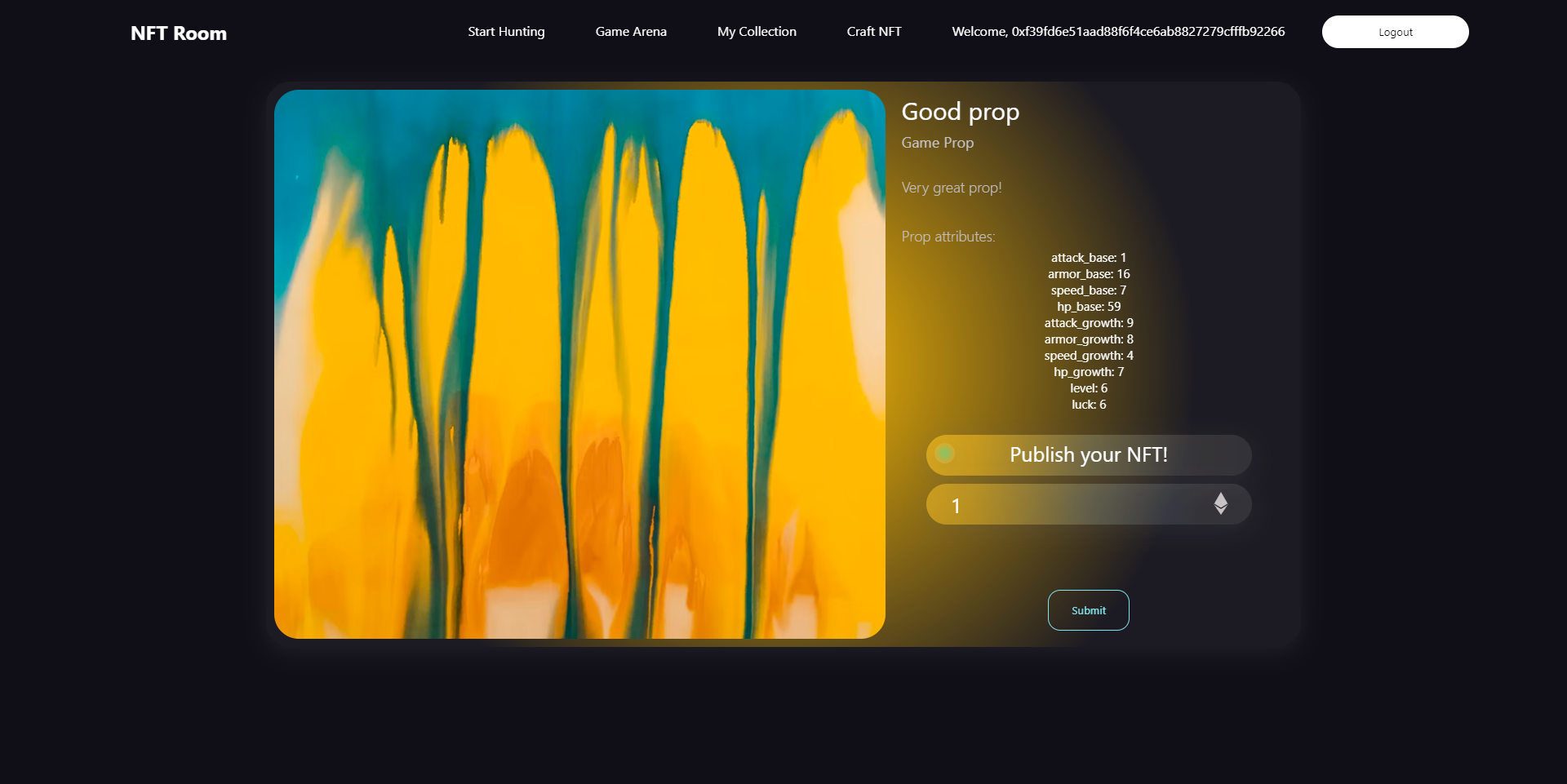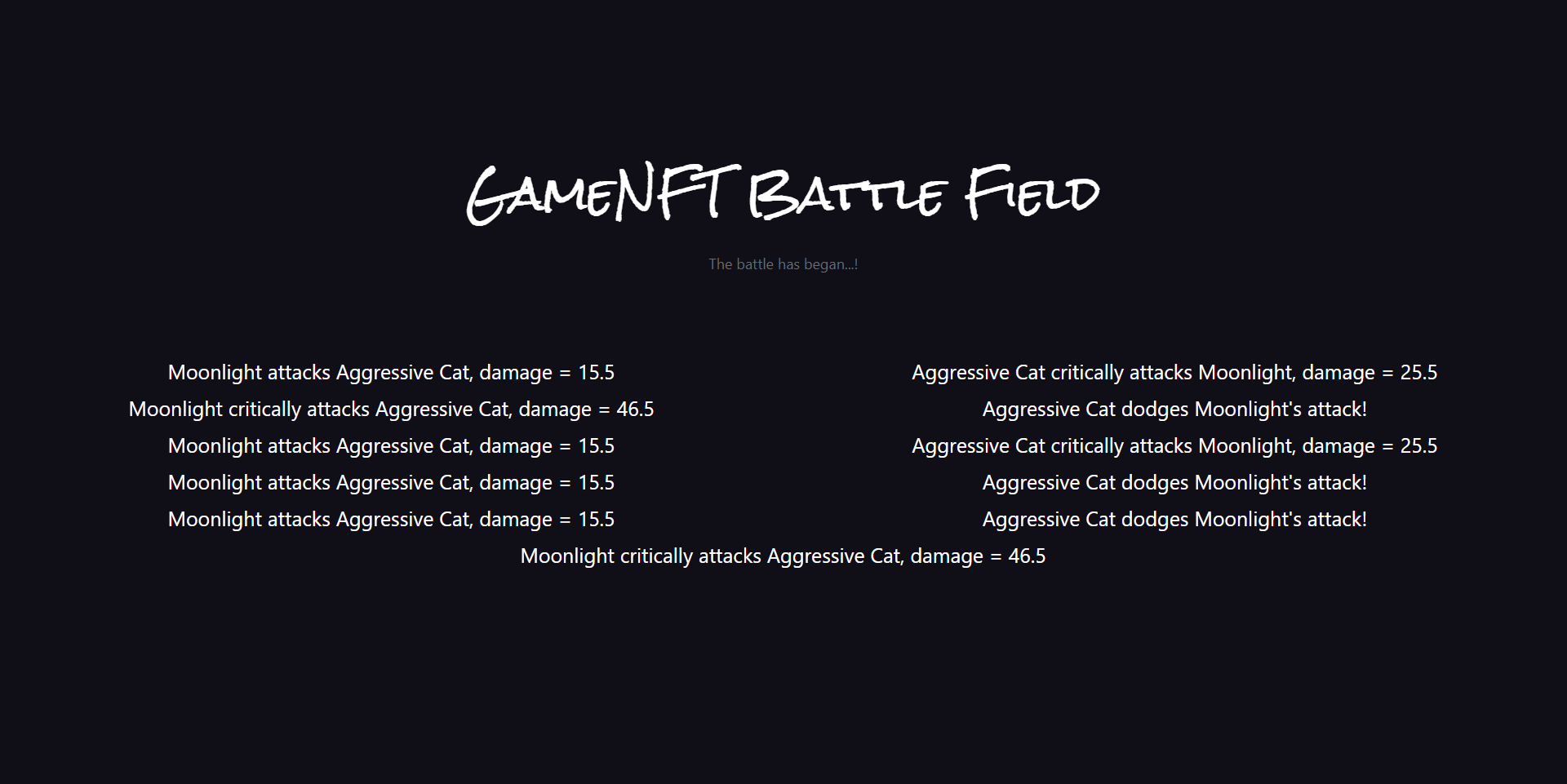- Published on
Decentralized GameNFT Marketplace
- Authors

- Name
- Bowen Y
Project Overview
The Decentralized GameNFT Marketplace project represents a cutting-edge approach to creating a blockchain-based platform for trading unique digital assets. Designed using Solidity, OpenZeppelin, Moralis, IPFS, and Hardhat, this marketplace leverages decentralized technology to offer a secure and scalable environment for users to buy, sell, and manage NFTs. By combining on-chain and off-chain strategies, the system efficiently handles complex transactions and data storage, all while maintaining security and decentralization.



Architecture and Tech Stack
This marketplace utilizes a mix of Solidity for smart contract development, IPFS for data storage, Moralis for handling complex off-chain logic, and Hardhat for testing and deployment, creating a robust, decentralized solution for NFT transactions:
Smart Contracts and Security:
- Solidity and OpenZeppelin were employed to build secure, reusable smart contracts that handle all NFT marketplace transactions, ensuring standard compliance with ERC721 for game NFTs.
- Multi-signature governance ensures critical changes require community approval, adding an extra layer of security and decentralization.
Storage Management:
- IPFS stores large files off-chain, optimizing costs by managing only essential data on-chain. By keeping game assets decentralized, IPFS maintains file integrity and immutability, allowing users to retrieve assets with minimal latency.
Off-Chain Computation:
- Moralis Cloud Functions enable efficient off-chain handling of resource-intensive calculations. This setup reduces gas fees and speeds up transactions, maintaining security and verifiability through on-chain hashing.
Deployment and Testing:
- Hardhat provides a development environment for testing, deploying, and monitoring contracts. With its plugin ecosystem, Hardhat facilitates smooth project scaling and helps identify issues early in the cycle.
Supporting Components
To maintain security, scalability, and efficient data management, the marketplace relies on several complementary technologies:
- SHA-3 Hashing: Used on-chain to provide an anti-cheating mechanism, SHA-3 ensures the integrity and authenticity of off-chain computations.
- IPFS CIDs: Content Identifiers (CIDs) in IPFS guarantee data retrieval accuracy, creating a secure link between NFTs and their metadata or media files.
Implementation Details
1. Smart Contract Development with Solidity and OpenZeppelin
The marketplace’s core operations, like minting, buying, and selling NFTs, are powered by Solidity-based smart contracts. Using OpenZeppelin libraries as a foundation, I customized the ERC721 implementation to support unique features for game NFTs, including royalty payments to creators and transfer fees. For example, each time an NFT is transferred, a small royalty is automatically sent to the original creator, a functionality added by extending OpenZeppelin’s ERC721 base contract.
Additionally, a multi-signature approach for governance was implemented, requiring the approval of multiple stakeholders for critical updates. This added security layer ensures that no single entity can make unilateral changes to contract settings, increasing user trust.
2. Optimized Storage Management with IPFS
To reduce on-chain storage costs, I configured IPFS to handle all game asset storage. When a new NFT is created, metadata, images, and other media are uploaded to IPFS, generating a unique CID (Content Identifier) for each asset. This CID is then stored in the blockchain as a reference, allowing the marketplace to link NFTs to their data without storing large files on-chain.
The IPFS storage workflow includes a verification process where, after uploading assets, the CID is checked for consistency. This process allows users to verify that the on-chain CID matches the actual asset data, maintaining integrity. By separating storage responsibilities in this way, the system reduces costs while maintaining a high level of data security and accessibility.
3. Off-Chain Computations with Moralis for Complex Operations
Certain operations, like calculating in-game rewards or determining leaderboard rankings, require intensive computations that would be expensive on-chain. To address this, Moralis Cloud Functions were used to handle these calculations off-chain. For instance, when a player completes an achievement, Moralis performs the necessary calculations to determine the rewards and updates them in a centralized database.
Each off-chain result is hashed with SHA-3 and stored on-chain to ensure tamper-resistance. This means that if users ever want to verify a reward, they can compare the on-chain hash with the computed result from Moralis. This approach balances efficiency with verifiability, offloading resource-heavy tasks without compromising user trust.
4. Anti-Cheating Mechanism Using SHA-3 Hashing
One of the challenges in a gaming-based marketplace is preventing cheating. To address this, I implemented an on-chain SHA-3 hashing mechanism that validates any user-submitted game data. For example, when a user submits their game results to the marketplace, a SHA-3 hash of the data is generated on-chain. This hash is then cross-checked against the off-chain calculations to ensure accuracy.
If the on-chain and off-chain hashes match, the result is considered valid, and rewards are distributed accordingly. This setup creates a robust anti-cheating mechanism, as any attempt to manipulate game data will fail the hash check, preventing unfair rewards.
5. Deployment, Testing, and Monitoring with Hardhat
Hardhat served as the main development and testing environment, allowing for rapid deployment and debugging. In local testing, I set up a simulated blockchain environment to assess how the smart contracts would handle high volumes of transactions and specific edge cases, such as multiple users attempting to purchase the same NFT simultaneously.
For deployment, I leveraged Hardhat’s plugin for gas reporting, ensuring that each transaction type was optimized for cost efficiency. After deploying to test networks, I monitored contract interactions using Hardhat’s built-in console, identifying potential issues early and ensuring smooth performance on the mainnet.
Conclusion
This Decentralized NFT Marketplace showcases the power of blockchain and decentralized storage in providing a scalable, secure platform for digital asset trading. By combining Solidity, IPFS, Moralis, and Hardhat, the project strikes a balance between decentralization and efficiency, offering users a reliable, cost-effective marketplace. With IPFS managing storage, Moralis handling computations, and on-chain SHA-3 hashing enforcing security, the marketplace is poised to offer a seamless and transparent experience in NFT trading.
